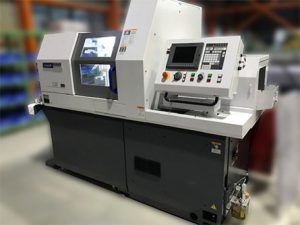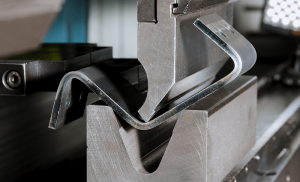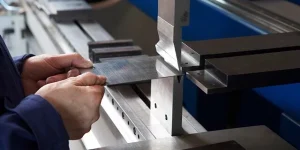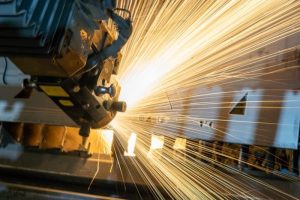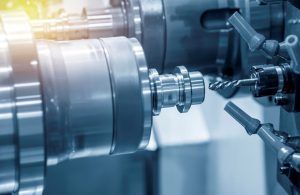CNC machines vary in cutting capacities: CNC routers handle up to 4 inches, mills cut up to 12 inches, laser cutters manage 1 inch, plasma cutters slice through 6 inches, and waterjet cutters can cut materials up to 10 inches thick.
CNC Routers
CNC routers easily cut through soft materials, such as wood, acrylic, and aluminum, generally managing materials that are up to about 4 inches thick. These devices are highly popular due to the fact that they are highly multifunctional and can create an expansive array of intricate engravings and carvings. For instance, a workshop CNC router can easily process a 2-inch thick oak necessary for a furniture piece like cabinet doors, as well as make highly detailed inlays. A common CNC router is the Shapeoko, which is designed for home workshop use. This device has a spindle power of about 1.25 kW, which is sufficient to carve through a 3-inch thick pine with great precision.
This tool is ideal for devoted hobbyists, who want to produce individualized decorations or even functional pieces, such as wooden signs or tabletops. Routers function at variable rates of speed, but most home models cut at about 200 inches per minute. Speed is important to consider, as a tool should cut quickly but not so quickly as to start a fire and chip the material. CNC routers see wide use in professional sign-making companies. These devices process acrylic sheets that are up to 0.75 inches thick and are used to create sturdy, weather-proof signs for shops and companies. Another great aspect is the cost-efficiency of the CNC router use.
The CNC routers require minimal time to create a workpiece, as well as little to no material waste. A typical modern CNC routing project might cost about $50 in materials and a few hours of machine time. The paid services are much more expensive. It is also critical to consider a CNC router’s specifications. A typical routing device has a work area size varying from 12 inches to over 48 inches. The larger work area directly affects what types of projects can be considered; bigger work zones are sufficient for creating all types of furniture, whereas 12-inch ones can only process smaller crafts or components.
CNC Mills
CNC mills are robust machines. They can work with a wide range of materials, as thick as heavily depends on the machine’s power and the hardness of the material. Smaller benchtop CNC mills can accept materials of around 2 inches. This range allows for making very precise parts, such as custom gears, and small engine components. The spindle of such millers has a power rating of about 2 kW, which works well with precise metalworking. Besides, it is much cheaper than a larger and more powerful machine. The more powerful industrial CNC mills can work with much thicker materials as large as 12 inches or even more.
They are equipped with a high-power spindle of approximately 20 kW which can cut through the materials as thick as a full-size block of metal. This means that such mills are commonly used in the manufacturing of heavy machinery or aerospace components. The ability to work with very thick materials is critical in fields that require parts of extremely high strength, which is, for instance, the case in automotive or aerospace engineering. In a machine shop, a medium-sized CNC mill can be utilized to produce stainless steel flanges used in plumbing systems. These flanges are made of 3-inch thick stainless steel.
The miller can perform a precise cut at about 100 inches per minute. This rate of speed is a reasonable compromise between the manufacturing speed and the cut’s quality, which, if enhanced, would lower the possible manufacturing speed. The purchase is justified by the machine’s performance and the amount of work it can do. A medium-sized mill may cost around $60,000 – $100,000, but it can vary. The price includes the software and the training. The operational costs can depend on the types of material and the tasks and usually are rather low in comparison with other production and manufacturing machines. If maintained properly, the life span of mullers of such size is 15 years or more.
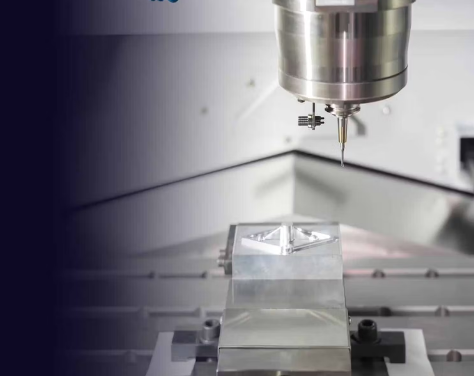
Laser Cutters
Laser cutters are known for their high precision of cutting a wide array of materials, including metals, plastics, wood, fabrics, etc. With respect to the thickness they can process, it can be said that it mainly depends on the power of a laser cutter, which varies from 40 watts even less for hobbyist cutters to about 4000 watts for industrial purposes in some cases. As for the 150-watt CO2 cutter on steel, cut the 1/8 and 1/4 acrylic and wood, it can be used to create decorative panels, bench tops, and signs. Furthermore, this power level allows cutting through mild steel up to and not less than 0.4 150-watt steel.
Thin materials can be much thinner, as one can cut a maximum of 3/8-inch copper and aluminum, and this is a popular tool to make even custom jewelry or details for cars’ appearance. However, in terms of 3000 wattages, it can cut even 1” stainless steel that is impossible even using acrylic panel to do visually, as the debris will become plastic slag though nothing will happen to stainless 1 3000-watt metal. It might last about 30 minutes as they cut about 20 inches per minute without running the risk to overheat during the cutting of such a temperature-resistant thickness.
When a cutter can do such a job so quickly, it lets the production facility solves other challenges that cannot be actually offered by any other devices that create so much value for such expenses. Speaking of which, the costs of the devices vary, as the small ones with not so much power might cost $3,500 or so, larger and stronger cutters range from $65,000-200,000 or the like. The process of their operation utilizes not only electricity and outlet filter, but also lenses and mirrors that tarnish rather soon and should regularly be replaced.
Plasma Cutters
Plasma cutters are one of the mechanisms that are designed to cut through thick metal plates efficiently and quick. Often used in industrial applications, these machines enable the cutting of various metals, such as steel, stainless steel, and aluminum. The thickness of the material that can be handled depends on the power of a plasma cutter. High-capacity machines range from 12 kW to 120 kW. A practical example of a plasma cutter, a 45 kW machine, enables the cutting of 1” steel at a rate of around 20 inches per minute. In a factory, such plasma cutter can be used to create large components that are used in ship building or heavy equipment manufacturing.
Scaling up, at industrial capacities, a plasma cutter is around 80 kW and can slice through 2” steel plates. At this thickness, however, the rate of the cut is reduced to around 10 inches per minute to allow the machine to operate efficiently. Finally, cutting into the costs, one should consider the total cost of operation, not just the machine’s cost. Plasma cutters can be bought from for $15,000 to slightly over $100,000, with cutting-edge technology phrased at a higher price. Operation costs are, of course, experiencing electricity cost as well as the cost of consumables: electrodes and nozzles will have to be replaced at some point, and it depends upon how many plates of a certain thickness will be cut.
Waterjet Cutters
Waterjet cutters are remarkable in that they cut an immense range of materials, such as metals, stone, glass, and composites, with more robust versions cutting through up to 10 inches of thickness. The processes involve water being centrally forced into a thin stream, which accelerates through a narrow nozzle and cuts via abrasion. Presumingly a decent version at an affordable cost, a 50 hp industrial waterjet cutter cuts through 2 inches of titanium. This metal is a staple of aerospace manufacturing, where high strength and light weight are vital for constructing planes, and automobiles. Thus, some of the sectors that may use a cutter are the same as those that might require parts produced using it.
They should be able to draw it out at speeds of around 15 inches per minute, as cuts are relatively precise despite being quick. For larger items and production, more powerful tools are required, and a 100 hp pump means a more robust waterjet cutter. Such devices are capable of getting through 6 inches of stainless steel at about 15 inches per hour. This metal is denser than titanium and used extra often in such contexts, allowing for greater thicknesses to be achieved.
Production is up, which makes the tool even more useful. I believe large parts can be produced for maritime engineering, as well as the construction of large machinery or vehicles, like trains utilizing cutters. The range of prices for the initial investments is vast, but averages start around $100,000 and presumably reach up to about $350,000. Hourly costs vary by thickness, cutting speed, water use, abrasive media, as it is usually garnet, and the subsequent maintenance of high-pressure components, averaging $20-$40, presumptively.


